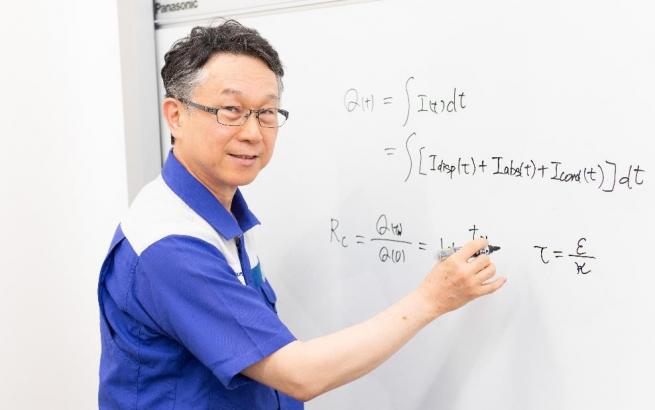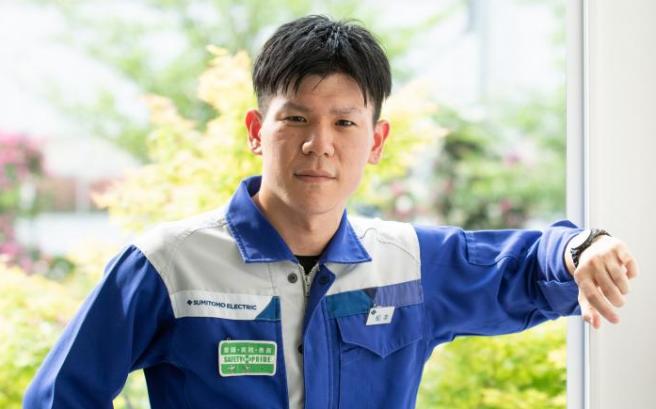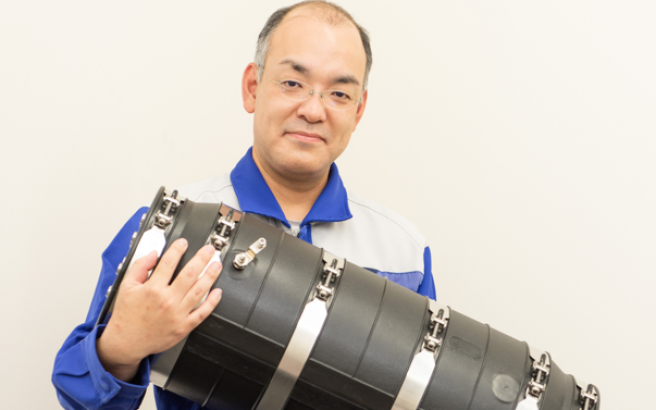Solving Challenges in Data Centers with Advanced Optical Connectivity Technology
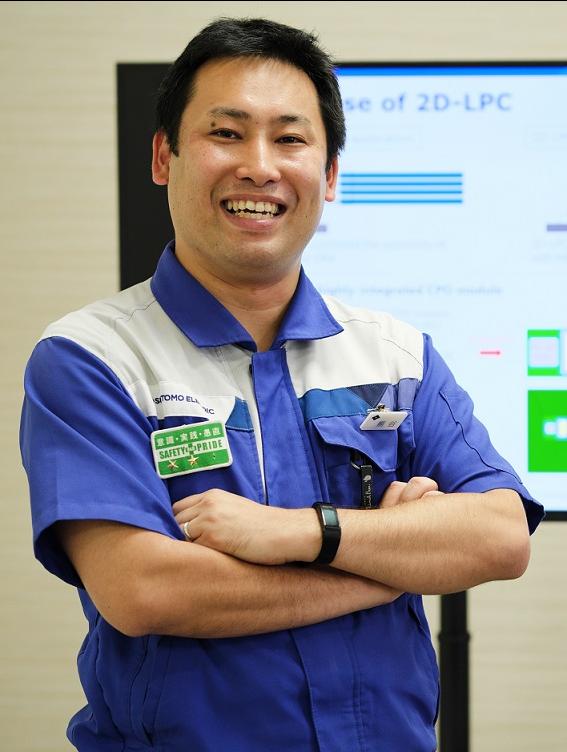
Two-Dimensional Optical Fiber Array with 90-Degree Bend for Next-Generation Datacenter Switches
Dr. Tsutaru Kumagai
Assistant Manager, Optical Communications Laboratory
As the utilization of big data and IoT technologies accelerates, data centers are experiencing a surge in data transfers at high speeds. One of the major challenges faced is the increasing demand for space to accommodate the devices supporting this data explosion.
Optical connectivity products hold the key to solving this problem. Our innovatively designed 90-degree bend two-dimensional optical fiber array (2D-FBGE) combines 72 optical fibers in a compact bundle and bends them at 90 degrees with a small radius. This configuration significantly reduces the space required for optical fiber connection, contributing to building compact devices and high-density networks.
Achieving high-density optical fiber connections to CPO switches in data centers
In order to effectively accommodate numerous devices within the confined spaces of data centers, device miniaturization is essential. A key solution to this issue is a co-packaged optics (CPO) switch, which integrates electrical and optical functions on a single substrate. CPO switches play an important role in optimizing network power distribution and power consumption, which requires efficient connection of silicon photonics (SiPh) chips and 72 single-mode optical fibers in a restricted space.
We had previously developed a 90-degree bend optical fiber array (FlexBeamGuidE: FBGE) for SiPh chips connection. However, this was a one-dimensional fiber array comprising eight optical fibers in line. Our latest development, the 2D-FBGE, revolutionizes this concept with a two-dimensional structure of a 6x12 array. This design successfully bends 72 optical fibers at 90 degrees, enabling space-efficient fiber coupling.
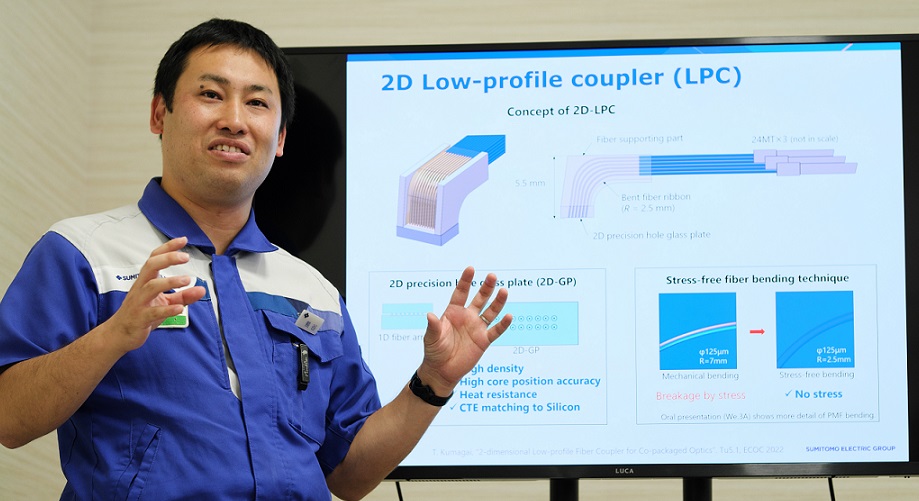
Addressing the challenge—A 90-degree bend for polarization-maintaining optical fibers
Compared to one-dimensional optical fiber arrays, the 90-degree bending of 2D-FBGE optical fiber arrays was a highly challenging task. One of the most difficult parts was to bend a polarization-maintaining optical fiber (PMF) to a small radius. A CPO switch requires the PMF to efficiently propagate light from an external device to a SiPh chip. Unlike ordinary single-mode optical fibers (SMFs), PMFs have a special structure to transmit signals while maintaining the polarization state of light, and therefore bending them could degrade the polarization state of light and signal quality.
Overcoming this challenge was greatly facilitated by the detailed experiments and data analysis led by co-author Haruki Kitao. Blessed with enthusiastic and cooperative team members, we overcame a number of difficult challenges and finally completed the 2D FBGE. Thus, we have established a method that allows small- radius bending of optical fibers at a height of 5.5 mm, surpassing our target of 6.0 mm, with no detriment to the performance or quality of the fibers.

Taking the 2D-FBGE technology to the world
2D-FBGE was initially developed as a space-saving solution, but now we envision it contributing to functional improvements, including enhanced communication speed and reliability. To align with the dynamic needs of the industry, we are committed to enhancing professional networks and fostering knowledge sharing at global conferences and exhibitions. Beyond that, we are proactively seeking opportunities for global expansion and technical partnerships to broaden the impact of our 2D-FBGE technology to the world.
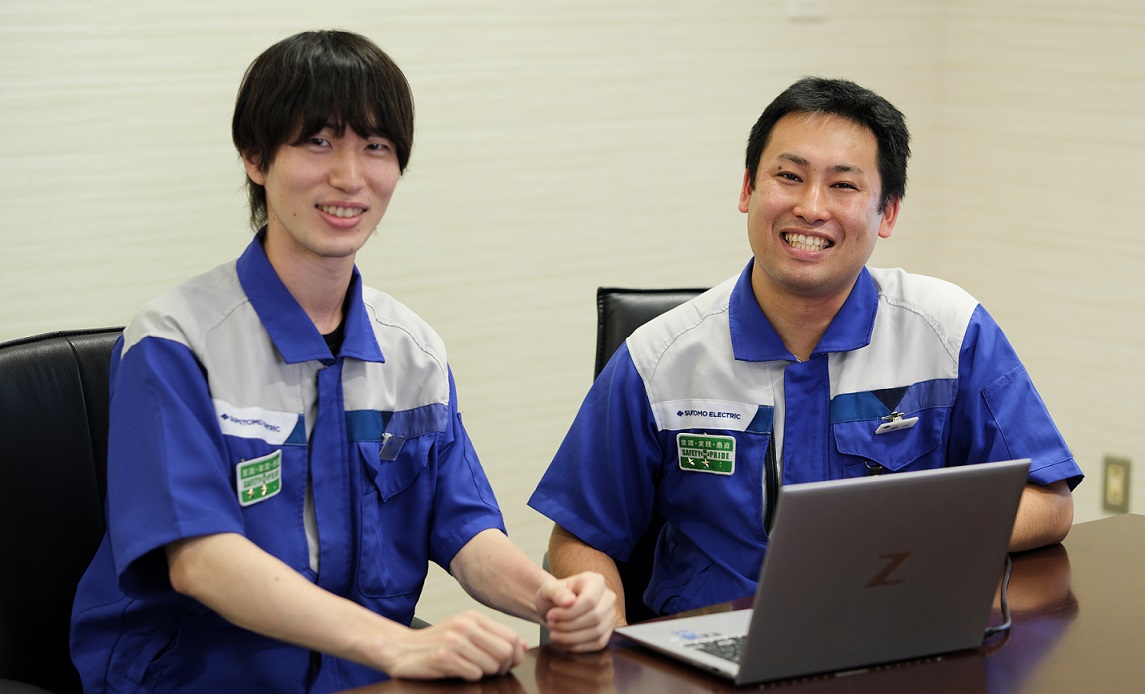 With co-author Haruki Kitao
With co-author Haruki Kitao
Related information
[Paper] Tsutaru Kumagai, Haruki Kitao, and Tetsuya Nakanishi, “2-dimensional Low-profile Fiber Coupler for Co-packed Optics,” European Conference on Optical Communication (ECOC), 2022, Tu5.1
[Paper] Tsutaru Kumagai, Naoki Matsushita, Yuichi Mitose, Yasuomi Kaneuchi,
Atsushi Kataoka, And Tetsuya Nakanishi, “Optical Fiber Array with 90-degree Bend for Silicon Photonics Chip Coupling,” Sumitomo Electric Technical Review No. 89, 2020
[Technologies and Products] Fiber Optic Interconnect
SUMITOMO ELECTRIC TECHNICAL REVIEW
A journal of technical papers explaining the Sumitomo Electric’s technologies. Technical papers are available in PDF format.
Learn more